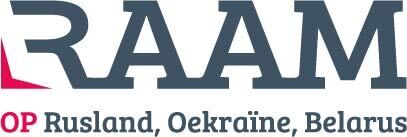US Congress is almost certain to approve a bill to send lethal weapons to Ukraine to help it quell the unrest in the Donbass rebel republics. The conflict in Eastern Ukraine is not 'frozen' at all: every day the cease fire of Minsk 2 is broken. Putin's proposal for a peacekeeping mission to protect OSCE monitors seems fairly useless. The palace coup in Luhansk shows the instability of the competing republics. Ukraine cannot be expected to defend itself with outdated Soviet weaponry, argues military expert Hannes Adomeit.
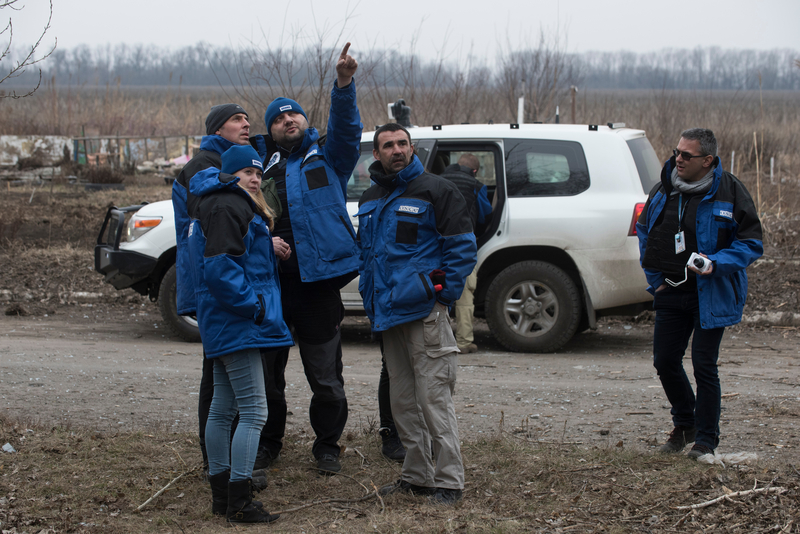 OSCE monitors cease fire in Donbass (picture OSCE)
OSCE monitors cease fire in Donbass (picture OSCE)
Several developments have converged to heat up the not so ‘frozen conflict’ over eastern Ukraine. On 24 November, the European Union blamed Russia for the deaths of at least five troops in eastern Ukraine in what appeared to be the worst outburst of violence in months. After a summit meeting with six eastern European countries, including Ukraine, EU Council president Donald Tusk called the death of five Ukrainian servicemen ‘just the latest proof of the tragic consequences of Russia’s aggression in Ukraine’. Furthermore, he stated, ‘frozen and armed conflicts continue to prevent development and create hardships in eastern partnership countries.’ The EU will continue to ‘condemn Russia’s aggression’ and ‘never recognize the illegal annexation of Crimea’.
On the same day, deputy head of the OSCE‘s monitoring mission in eastern Ukraine Alexander Hug stated in a briefing that fighting in the conflict zone had ‘steadily risen in recent weeks’ and that this had the potential ‘to surge this winter’. Once the ground froze, he explained, it would be much easier to move heavy weapons. In the past year, according to him, the ceasefire that was agreed upon in Minsk in February 2015 (Minsk 2) had been violated ‘more than 330,000 times’. There had been ‘more than 400 civilian victims of the conflict’. (The total amount of casualties now stands at about 35,000 people, of whom more than 10,000 deaths.) Along the line of contact of roughly 500 kilometers, Hug continued, the armed forces of the two sides in some areas were almost in eye contact. They used tanks, artillery pieces and multiple rocket launchers. If the military forces along the contact line would not be separated, the situation would deteriorate.
Peacekeeping mission
On 13 November, Kurt Volker, U.S. representative for Ukraine Negotiations, and his Russian counterpart, presidential aide Vladislav Surkov, held the third meeting in a row since August 2017 to discuss the possibility of deploying a UN peacekeeping mission in the Donbass region of eastern Ukraine.
One of its main points of reference was Russia’s draft resolution submitted to the UN Security Council on 5 September. It said that a UN peacekeeping force was to be deployed along the contact line, and only there, separating the sides of the conflict to ensure the safety of the OSCE Special Monitoring Mission observers. For that purpose, the force was to be equipped with light arms. Its operation was to begin once, according to the Minsk 2 agreements, all heavy weapons had been removed from the contact line. The peacekeeping mandate was limited to six months.
Apparently admitting that OSCE inspectors fulfill their mission not only along the Donbass contact line, in a telephone conversation with German chancellor Angela Merkel on 11 September Putin lifted the limitation and conceded that UN peacekeepers could be deployed also in other parts of the conflict zone where the OSCE observers work. The proposal, however, does not envisage a robust mandate to operate in the Donbass to enforce the ceasefire and secure the withdrawal of heavy weapons, let alone secure the Ukraine-Russia border and stop the flow of weapons and fighters from Russia into Ukraine.
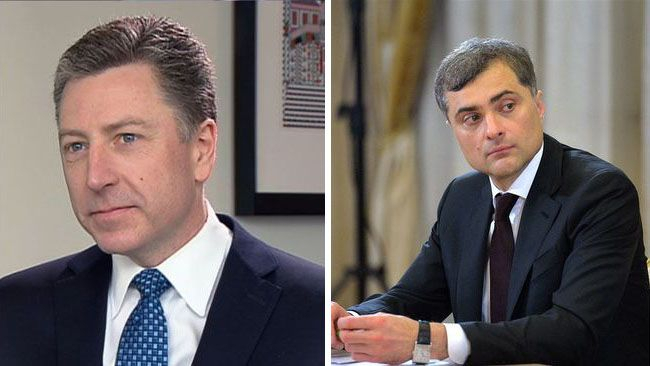 American representative Kurt Volker and Russian envoy Vladislav Surkov: their talks ended nowhere
American representative Kurt Volker and Russian envoy Vladislav Surkov: their talks ended nowhere
In essence, the proposed mission cannot really be regarded as a peacekeeping operation; it is a mission to protect another mission. As Ukraine’s ambassador to the UN has aptly pointed out: ‘Imagine the situation: there are unarmed OSCE monitors and they are guarded by UN peacekeepers. I do not see any peacekeeping in this, and I cannot imagine how this can be done technically.’
It is not surprising, therefore, that the Volker-Surkov talks have not led very far. Summarising the results of the 13 November session, Surkov stated that ‘our American friends presented their proposals concerning our Security Council draft resolution, which contained 29 paragraphs. Our delegation came to the conclusion that three of them were acceptable. Not a lot, really.’
Lethal weapons for Ukraine?
Another development with potentially serious impact on the conflict is the apparently inexorable change of policy in the United States towards the delivery of ‘lethal weapons’ to the Ukrainian armed forces. On 12 November the US National Security Council decided to offer a $47 million grant package to the Ukrainian government to purchase American defensive arms, including the powerful Javelin anti-tank missiles and anti-aircraft systems. This would be on top of $175 million worth of non-lethal equipment and supplies, for a total of $750 million over the last three years.
The US Congress and the president still have to approve the sale. Considering the overwhelming support in both the Senate and the House of Representatives for the new Russia sanctions in the August 2017 ‘Countering Russian Influence in Europe and Eurasia Act’, Congressional consent is almost certain. There is also a united front of support among the president’s senior executives, including vice president Mike Pence, secretary of state Rex Tillerson, secretary of defense James Mattis and national security advisor H. R. McMaster. For them, the issue of delivering defensive arms to Ukraine has been decided and that it is now a matter as to how best publicly to convey the message.
As for the president, if he were to approve the arms deal, it would be a major shift from the 2016 party platform on sending lethal weapons to Ukraine, which was amended when Trump was the party's nominee for president, from supporting ‘lethal defensive arms’ to the more vague extending ‘appropriate assistance’ to Ukraine. The understanding he has expressed for Russia’s annexation of the Crimea and his deafening silence on Moscow’s military intervention in eastern Ukraine show that he may be disinclined to approve the sale. However, in the end things may turn out as with the sanctions act, which he grudgingly signed into law although he considered it to be ‘seriously flawed’.
The delivery of ‘lethal’ defensive weapons to Ukraine, however, is quite controversial among Russian and international security experts. As argued, for instance, by Charles A. Kupchan of Georgetown University, a member of the US National Security Council from 2014 to 2017, the planned measure would be a ‘serious mistake’. The notion that Putin would give up his hold on Donbass ‘if a few more Russians come home in body bags is to dramatically misread the Kremlin’. Russia would take steps to offset the improvement in Ukraine’s military capability and would escalate the conflict. Intensified fighting and further losses of Ukraine’s territory would follow. The Russians had shown that they are able effectively to counter Ukrainian military successes — in some instances, retaliating with devastating effect. For instance, when Ukrainian forces in the summer of 2014 advanced into Donbass and took the strategically located city of Ilovaisk, Putin promptly called in his own crack troops, which quickly decimated the Ukrainian units that had taken the town.
 Ukrainian Azov batallion trains near Mariupol (picture Laura Starink)
Ukrainian Azov batallion trains near Mariupol (picture Laura Starink)
Similarly, in a op-ed for the Carnegie Endowment of International Peace, Eugene Rumer and Thomas Graham have warned that the weapons could end up in the hands of out-of control Ukrainian militias − or worse, in the hands of pro-Russian separatists. Furthermore, US military specialists would be required for instructing the Ukrainian armed forces. If this happened, this would ‘be sending Americans into a war zone with Russia as the enemy’. It would be ‘hard to pretend then that the US is not a party to the conflict’.
Russia has used similar arguments. On the day it submitted its peacekeeping proposal to the Security Council, Putin said of the US plans that it was, of course, the ‘sovereign decision’ of the United States to whom they sold or gave arms for free, but he warned that the supply of weapons to conflict zones ‘does not favour pacification but only aggravates the situation’. In allusion to the position that Russia did not supply weapons to the separatists, he mentioned that ‘the self-proclaimed republics’ had an ample supply of weapons, ‘including those seized from the opposing side, from nationalist battalions’. He also uttered a cryptic warning: If US weapons were to enter the conflict zone, it would be ‘difficult to say how the proclaimed republics will react − maybe they will send the weapons they have to other zones of conflict that are sensitive to those who create problems for them’.
Russia undermined European order
The strongest argument in favour of delivering defensive weapons to Ukraine, however, can be said to rest in its moral quality. By forcibly changing the Ukrainian borders through the annexation of the Crimea and by its military intervention in eastern Ukraine, Russia has undermined the post-Cold War European order. Simply put, a major European state has become the victim of aggression and it is the duty and moral obligation of its neighbours to come to its assistance.
Moreover, the arguments against delivering defensive weapons to Ukraine are unconvincing. Their main underlying assumption appears to be that the weapons will provide the Ukrainian government with the will and the Ukrainian armed forces with the capabilities to conduct offensive operations into separatist-held territory. Both assumptions are questionable. The same applies to the notion that by sending military instructors, the US would somehow be dragged into a military conflict with the Russian military. The training can be conducted far away from the Donbass, in western Ukraine, for instance. To be considered also is the fact that Ukraine is engaged, with US and NATO European assistance, in a serious effort at defence reform. Part of this endeavour should be the modernization of its arsenal. The Ukrainian armed forces cannot be expected to remain stuck forever with outdated Soviet-era weaponry.
No one has seriously suggested that the planned measure would persuade Putin to give up his hold on Donbass. What it is likely to achieve, however, is a strengthening of deterrence and the levelling of a dangerous playing field. There is overwhelming evidence that the separatist armed formations have used the newest models of Russian-made arms that were never supplied to Ukraine before the outbreak of the military conflict in 2014 nor exported to other countries. The modern weapons supplied to the separatists have included Russian modifications of the T-72 tank, BTR-82 infantry fighting vehicles, BPM-97armored personnel carriers, Pantsir-S1 anti-aircraft systems, and Kornet anti-tank missiles.
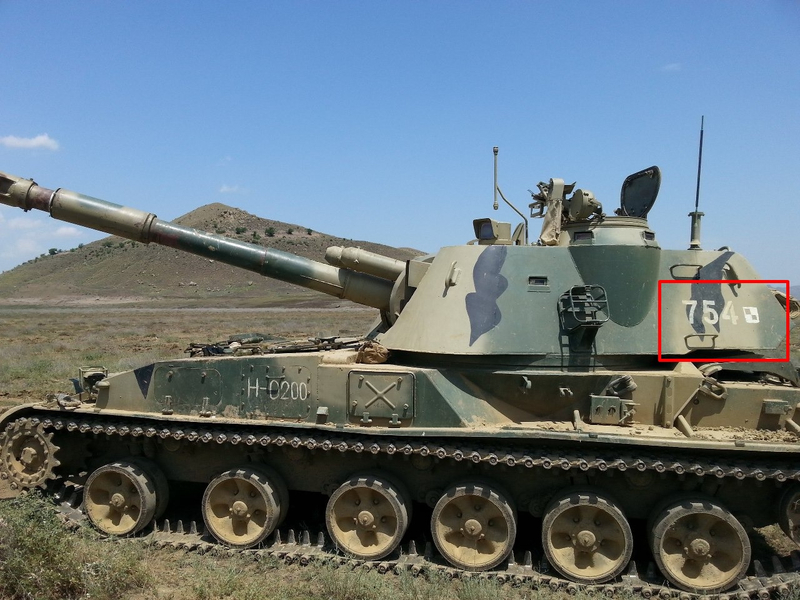 Artillerymen of Russia's 136th Motorized Infantry Brigade in the Donbass (photo Bellingcat)
Artillerymen of Russia's 136th Motorized Infantry Brigade in the Donbass (photo Bellingcat)
All this makes the arguments in support of weapons supplies more convincing, that is, that the delivery of anti-tank and antiaircraft weapons would increase the defence capabilities of Ukraine’s poorly equipped army; as defensive weapons, which they are, they should not be regarded as destabilizing; they would serve to limit Russian ambitions and aggression as well as decrease the risk of any further military advances and territorial expansion by the Russian-supported separatists, for instance, the rekindling of the idea, first raised by Putin on 17 April 2014, for the reconstitution of Empress Catherine the Great’s province of ‘Novorossiya’, stretching from present-day Donetsk to Transnistria or of ‘Malorossiya’ to encompass all or at least 19 of the provinces of Ukraine minus Crimea (https://www.raamoprusland.nl/dossiers/oekraine/660-little-russia-big-dreams); and overall enhance rather than detract from the chances for meeting at least some of the agreed-upon Minsk 2 military and political provisions.
Failure of Minsk 2
The fact of the matter, however, is that not a single one of the thirteen provisions of the February 2015 Minsk 2 agreements has ‘completely’ been implemented, and the likelihood that this will occur is remote. This is evident when considering what it is that both Ukraine and Russia have failed to implement.
Kiev is obliged to:
- carry out ‘constitutional reform in Ukraine, with a new constitution coming into effect by the end of 2015’ with ‘decentralisation as key element’.
- by the end of 2015 hold ‘local elections in accordance with relevant OSCE standards and monitored by OSCE/ODIHR’.
- approve ‘permanent legislation on the special status of particular districts of Donetsk and Luhansk oblasts taking into account peculiarities of [these] districts’.
- support ‘the socio-economic development of [these] districts’.
- assist ‘cross-border cooperation by [these] districts with regions of the Russian Federation’.
- allow these districts to create ‘people's militias to maintain public order’.
Russia is obliged to:
- pullout all armed formations and military equipment from the conflict areas.
- restore ‘control of the state border to the Ukrainian government'.
From Kiev’s perspective, implementation of these provisions would simply serve to legitimize the rule of the separatists in the areas under their control. The Russian government, in turn, is averse to leaving the separatists to their fate. It sticks to its position that it is not involved in the conflict and subsequently has no weapons and troops there. Implementation of Minsk 2 is thus up to Kiev and the authorities in Luhansk and Donetsk. Similarly, the restoration of ‘control of the state border to the Ukrainian government officially is none of Moscow’s business. This also had to be worked out by Kiev and the separatists – and only as a result of a process that, according to the Minsk agreements, would ‘start on the first day after the local election and end after the full political regulation’.
Yet it is almost inconceivable that the elections will be free and fair and conducted in accordance with OSCE/ODIHR standards. These require that the citizens of the country concerned must enjoy full ‘protections of the rule of law’ and that they must be able ‘to exercise a wide range of human rights and fundamental freedoms on an ongoing basis’. Such conditions are completely absent in the districts under separatist control. The recent power struggle in the Lugansk ‘People’s Republic’ provides new proof of that.
Coup in Luhansk People's Republic
On November 20 Igor Plotnitsky, the head of the ‘LPR’ decided to fire long-time competitor Igor Kornet, the interior minister. The latter refused to comply: Luhansk state television showed masked men with assault rifles and heavy machine guns blocking the entrances of administrative buildings and streets in the centre of the city of Luhansk, reportedly on the orders of the interior ministry. One of the armed men wore the blue uniform of the interior ministry’s Berkut unit, a police force specialising in putting down riots. Kornet won this part of the power struggle apparently because of the military support sent from Aleksandr Zakharchenko, chief of the adjacent Kremlin-backed Donetsk ‘People’s Republic’. Plotnitsky fled to Russia.
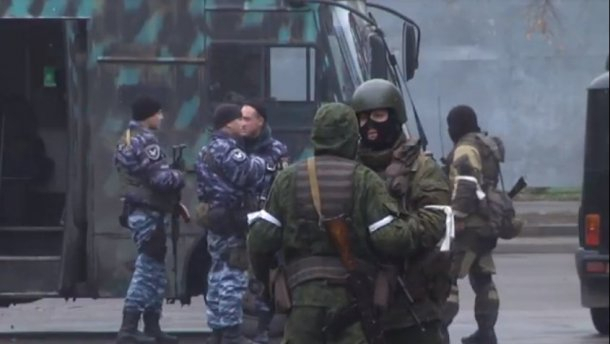 Little green men staged a coup in Luhansk (photo Open Source)
Little green men staged a coup in Luhansk (photo Open Source)
Top dog in the power struggle, however, turned out to be not Kornet but a certain Igor Pasechnik. This guy announced the leadership change on a local TV channel, stating that Plotnitsky had resigned ‘due to health reasons’ after ‘numerous wounds’ caused by shelling. This might be an ominous announcement since his predecessor Valery Bolotov, who also stepped back because of health issues, later suspiciously died of a heart attack in Russia.
Pasechnik (47), the new head of the’ LPR’, is the son of a Russian police officer who spent his childhood in Russia’s far-eastern city Magadan. According to Kiev-based investigative journalist Oksana Grytsenko, he studied at a military college in Donetsk and worked in Ukraine’s Security Service (SBU) anti-smuggling department in the Luhansk Region but was reportedly recruited by Russia’s FSB. Before the war in eastern Ukraine, he headed the SBU’s office in the city of Stakhanov, origin of most of the initial Russian-backed Luhansk separatists. In October 2014, he was appointed head of the State Security Service (MGB) of the Russian-occupied territories in Luhansk. Conflicts between him and Plotnitsky came out in the open in 2015 and in all likelihood continued through 2016 when Plotnitsky survived an assassination attempt as a result of a failed coup.
The power struggle in Luhansk is typical for the incessant redistribution of power among the siloviki, the members of the security services and field commanders, in the separatist-controlled areas not only of Luhansk but also Donetsk. Their struggles are characterized by mass arrests of competitors, killings, bomb explosions, hostage-taking and torture in so-called ‘cellars’.
Frozen conflicts offer no perspective
For the outsider it is exceedingly difficult to determine who at any given time has the support of which part in Moscow's 'power vertical’. Thus, in the Luhansk case, it is speculated that Pasechnik and Kornet had the support of the Russian security service FSB and Plotnitsky was backed by Putin’s aide Surkov.
Whatever the validity of such speculation, the local power struggles and their putative connections with Moscow are significant for the fate not only of the breakaway parts of the Luhansk and Donetsk Oblasts but for the chances of a more or less meaningful implementation of the Minsk agreements. This can be underlined by the fact that Pasechnik thanked Plotnitsky for the ‘huge contribution’ he had made to the ‘peace process’ and that he appointed him, despite his being out of the country, as ‘LPR representative for the implementation of the Minsk agreements’.
The net result of these developments is that the fate of the separatist republics will in all likelihood be the same as that of other ‘frozen conflict’ areas. Whatever the legal form of Russian control, whether annexation (Crimea), ‘international’ legal recognition as independent states (South Ossetia and Abkhazia) or de facto control (Transnistria), the governments of the countries concerned will in the foreseeable future be unable to reassert sovereignty over these areas.

